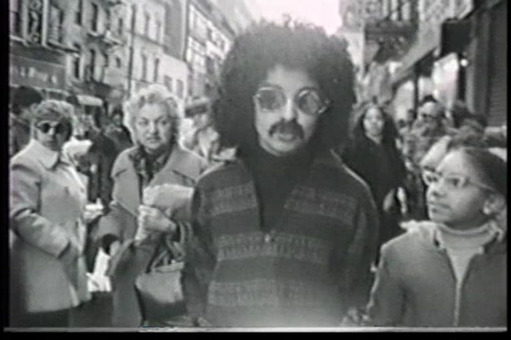Louise Bourgeois: 1911-2010
Louise is a contemporary female artist whom we have
been fortunate enough to learn about it class. Her art consists of surrealism,
the body, installations and more. She is an artist that we believe today who
has influenced female artists and feminist art practices. Her artwork is often
explicit but has relevant and important meaning behind each piece whether it is
sexual or of some odd shape. As stated in The Art Story and similarly in class,
“Bourgeois transformed her experiences into a highly personal
visual language through the use of mythological and archetypal imagery,
adopting objects such as spirals, spiders, cages, medical tools, and sewn appendages
to symbolize the feminine psyche, beauty, and psychological pain” (The Art
Story, Modern Art Insight, 2018). In example, the piece in which we saw in
class, “Fillette” – 1968: this is an example of a type of body art piece which
can be interpreted in different ways. One of which being a distorted looking
erect penis and testicles and the other being a long neck with breasts. The
title translates in English to “little girl” which I still cannot fully grasp
the meaning, however, according to the same source used previously, “…the
work suggests a girl metamorphosed into that which threatens her” (The
Art Story, 2018).
 |
| Lousie Bourgeois, "Fillette", 1968 |
Yoko Ono: 1933 – Present
Yoko is a contemporary artist who is
well known for her music and her performance art. She is Japanese – American. I
previously only knew her as John Lennon’s wife and as a musician. I was
pleasantly surprised to learn of her in class as a performance artist. I really
enjoyed learning about her and found her performance art to be incredibly
unique due to how raw it was because it often lacked control ( I mean that in a
good way, though). She said it best
herself, “What I am trying to do is make something happen by throwing a pebble
into the water and creating ripples… I don’t want to control the ripples” (Yoko
Ono). Some of her performance art was
correlated with Dada. One obvious piece that represented both feminism and the
female body was, “Cut Piece” – 1964. This was unique because she allowed the
audience to have control and cut pieces of her clothing off, exposing her to
real and raw emptions of whether or not she felt objectified or uncomfortable
or not.
 |
| Yoko Ono, "Cut Piece", 1964 |
Doris Salcedo: 1958 – Present
Doris is a contemporary artist whom
we have learned about in class and is well known for her sculpture work. She is
a female artist who portrays the idea of history and politics well (something
that most do not take seriously from women). However, she does it confidently
and with true meaning. For example, her Istanbul piece – here she is trying to
show the connection between war and politics and how it is a large part of our
everyday lives. She expresses that war
and politics and hardships is something that we are ALL experiencing – in which
makes us all equal in some way. Attached is a link to a video which describes
this piece and her goal/message behind it.
 |
| Doris Salcedo, "Untitled", 2003 |
Marina Abramovic; 1946 – Present
Marina is another contemporary
female artist who makes performance art. Her goal is to connect with audiences
more rather than have them just stare at a piece of artwork. She focuses on the
body, more specifically the female body being that she and her is a subject in
some of her pieces. She represents pain and hardships by literally involving
herself in performance pieces in which she puts herself at risk of getting hurt
or harmed in some way. According to The Art Story, “We
might interpret her work as having displaced art from traditional media such as
painting and sculpture, and moved it directly on to her body. Yet far from
conceiving it as simply a surface, she has said that she thinks of the body as
the "point of departure for any spiritual development” (The Art Story -
Modern Art Insight, 2018). An example of a piece is, “Rhythm 0” – 1974. Here
she allows the audience to interact with her and gives them the option of using
a plethora of objects on her body in any way they would like. She felt this piece
was important in representing that we can confront pain (especially unique
being that she is a woman – going against the stereotype that women are weak
and cannot handle physical nor emotional pain). Some wanted to see her in pain,
others wanted to relieve her pain. Objects used: pen, gun, band –aids, etc.
 |
| Marina Abramovic, "Rhythm 0", 1974 |
Rachel Whiteread: 1963 – Present
Rachel is another contemporary
female artist whom works on modern sculptures as one of her styles. She is
significant in my opinion because she is the first woman to win a Turner Prize
– although not really feminist – it was a contribution to female artists and
their path to only go up. For example, “House” – 1993. The Art Story explains
it well, “ Whiteread's
piece was remarkable for its wealth of associations, which were personal,
political and social. Untitled (House) forced the viewer into
an uncomfortable relation with architecture; by turning the house apparently
inside out, the viewer is psychologically placed both inside and outside the
building, evoking simultaneous feelings of inclusion and marginalization” (The
Art Story, 2018).
 |
| Rachel Whiteread, "Untitled" (House), 1993 |
Works Cited
The Art Story - Modern Art Insight, 2018
^ Use this site to type in the other Artist's names (in the search box - top right) in which I sited this source when talking about them
https://art21.org/watch/extended-play/doris-salcedo-istanbul-short/
^ Video for Doris Salcedo









